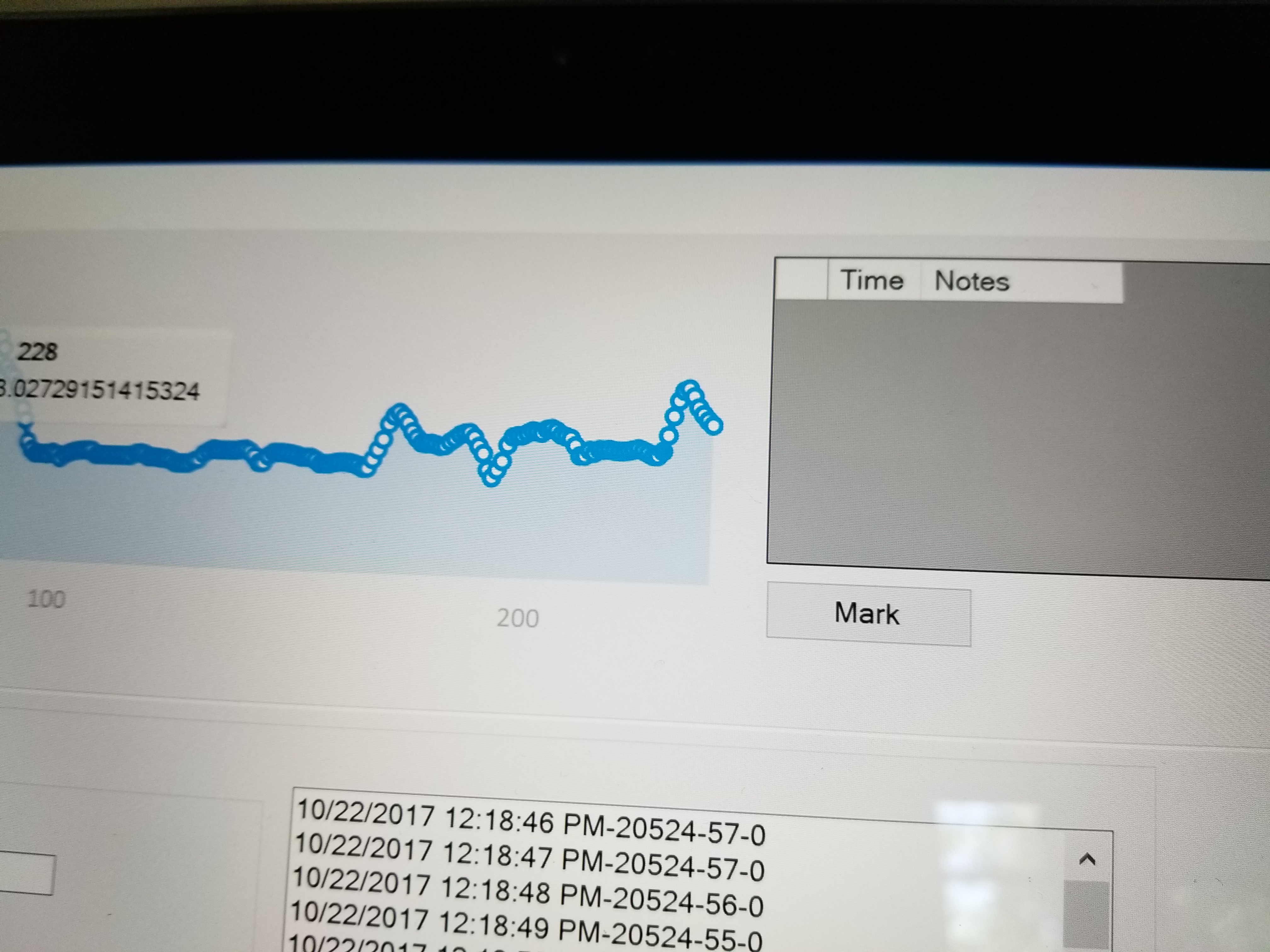In the video, a father tries to connect with his teenage daughter. She’s kind of a pill. She ignores him. She rolls her eyes when he tries to connect with her. At one point, he takes a selfie with her on an HP camera (product placement!), and puts it in her lunchbox.
After a long day of work, the father comes home, where his daughter once again doesn’t pay him much attention. (She’s a teenager; she’s not supposed to like her dad!) The father walks up to her empty bedroom and sees all the signs that his little girl is growing up. He lays down on her bed, feeling the weight of fatherhood on his shoulders. Then he notices that above her bed, she has taped photos the two of them have taken together over the years.
And at that point, I had tears in my eyes. I tried to hide it, but through the INBand, Dr. Zak had evidence of my emotional state. After the video concluded, he showed me my chart:

At the beginning of the blue timeline, my emotional brainstate was aroused because I encountered something new—a video!—before settling in to my normal state. But then I started experiencing upticks of emotion. Each little boost corresponded with a point in the video when I cared about the father. Near the end, you can see the big spike as I got teary. The spike didn’t immediately fade away, either. I was left empathizing with the father even after the clip ended.
I had just experienced what Dr. Zak describes as “the melting of the self-other divide.” When oxytocin gets released, we care about those around us in the same way we care about our families. This brain mechanism has been an evolutionary advantage for humans. It helped us survive, work together, and build civilization.
Over the years, Dr. Zak’s work—including his latest book, Trust Factor: The Science of High-Performing Companies—has shown there are plenty of ways for us to generate Oxytocin so we can connect with people. “Any positive social experience will do it,” he said. Hugs, acts of kindness, etc. One of the most surefire ways to generate empathy is via emotional narrative.
So how do we create narratives that work from this neuroscience perspective?
The key is not to blindly chase attention, as some commercials attempt to do in any way possible. “You want a real story arc, real conflict, real emotion,” Zak said, echoing what storytellers since Aristotle have taught. “The tension has to grow.”
[To drill deeper into the elements of great stories as taught by Aristotle, et. al, get our free storytelling email course here!]
The video Zak showed me was essentially a long commercial. From a brand. And yet it still worked. That’s because the narrative had:
a) characters with emotions you could relate to
b) a gap between what the characters wanted and what they had
c) novelty and surprise along the way that kept you emotionally invested
Emerging neuroscience research, and devices like the INBand, have big implications for the future of advertising and marketing. I’m excited for the world to start using these tools to tell better stories better and make better ads. But more than anything, it confirms what we all have known deep down since forever: Great stories make us care.
To learn more about the science of storytelling, pre-order a copy of our upcoming book The Storytelling Edge.
Image by HP


